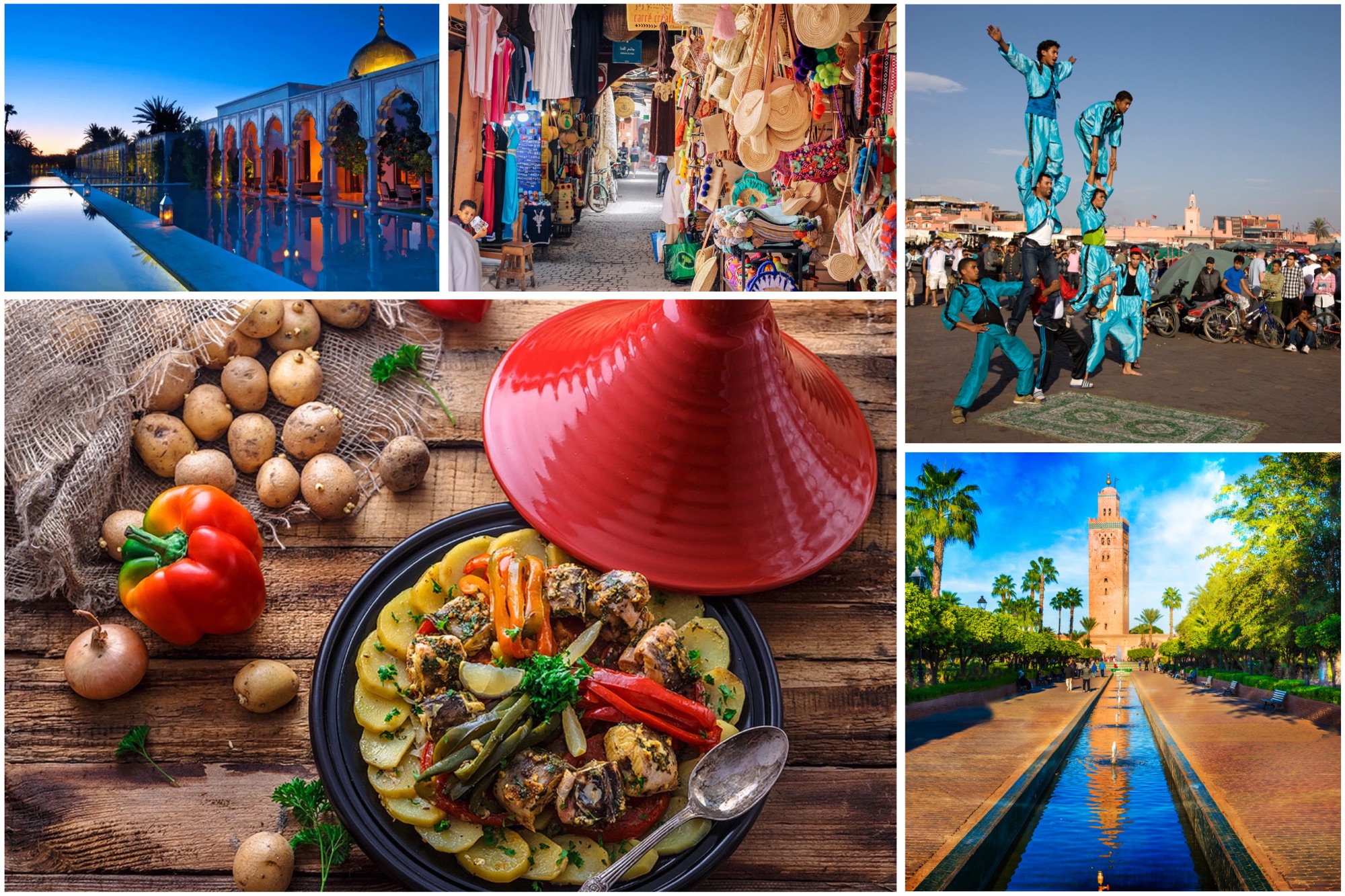Marrakesh, often referred to as the “Rose City” or “Red City” due to its blush-toned buildings, exudes historic splendor and allure. As a must-visit destination, Marrakesh enchants visitors with its blend of ancient charm and modern luxury. Here’s a guide to the city’s highlights.
Marrakesh, frequently the starting point for Moroccan adventures, offers a rich tapestry of experiences. This vibrant city, also spelled Marrakech, has long been a hub for traders. Within the fortified walls of the Old City Medina, a maze of bustling souks and narrow passageways awaits, overwhelming the senses with a dizzying array of scents, sights, tastes, sounds, and textures. While the city’s frenetic pace can be both thrilling and overwhelming, pockets of tranquility are found in serene riad hotels and lush parks.
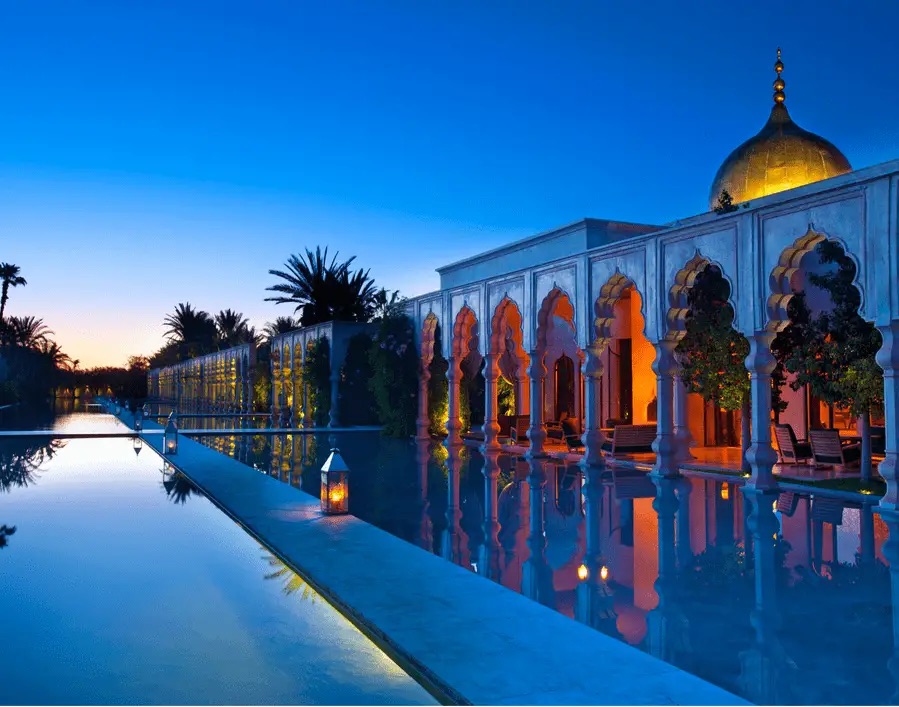
The lively souks, dramatic street vendors, and mesmerizing street performers are must-see attractions, but don’t miss the grandeur of the city’s palaces, the spiritual resonance of the mosques, and the culinary delights. Here are the essential experiences for any visit to Marrakesh.
5. Eat Traditional Moroccan Food
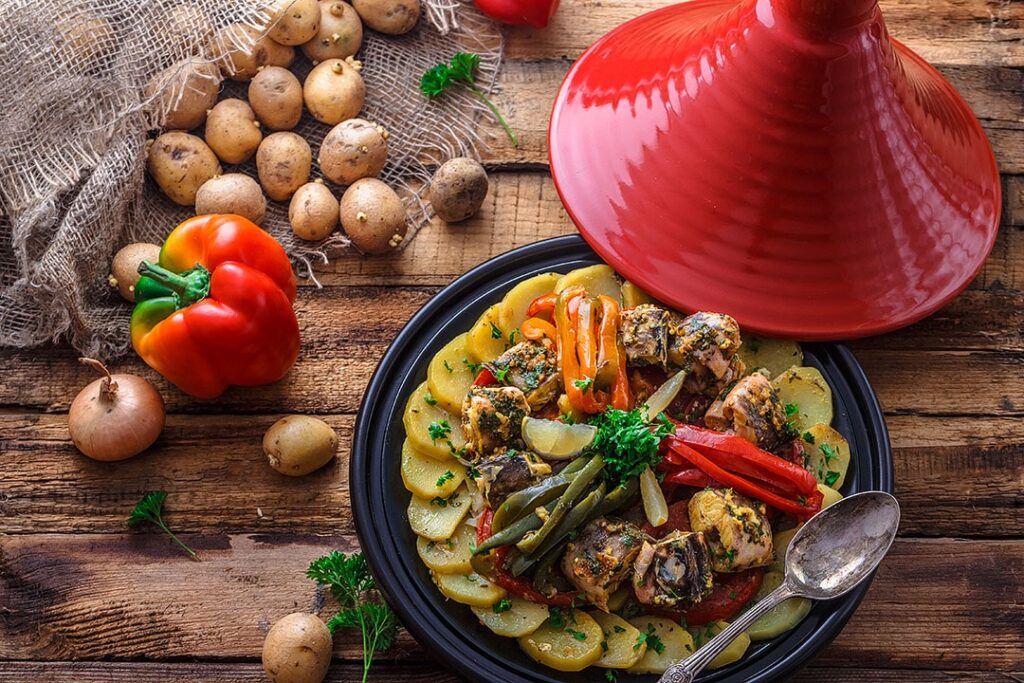
Moroccan cuisine is a rich tapestry influenced by Berber, Jewish, Arab, Mediterranean, and French culinary traditions, with additional touches from European and sub-Saharan cuisines. The food is a harmonious blend of savory, sweet, and tangy flavors, seasoned with a diverse array of spices.
While in Marrakesh, immerse yourself in the culinary tradition by sampling a variety of authentic Moroccan dishes, including:
- Tangia: A Marrakech specialty, this dish involves lamb slow-cooked in a clay pot with lemon, garlic, and saffron, traditionally prepared in charcoal and distinct from tagine.
- Tagine: A hearty stew slow-cooked with lamb, chicken, or fish, combined with vegetables and sometimes nuts and dried fruits, all served in its namesake clay or ceramic pot.
- Couscous: Made from durum wheat semolina, this staple grain is typically accompanied by vegetables and meat.
- Bastilla: A savory Moroccan pie with layers of saffron chicken, a spicy omelet, and crunchy almonds, all encased in a flaky pastry.
- Taktouka: A vibrant blend of tomatoes and green peppers.
- Zaalouk: A flavorful dip crafted from eggplant, tomatoes, garlic, olive oil, and spices such as cumin and paprika.
- Shakshouka: A beloved Mediterranean breakfast featuring eggs poached in a robust tomato sauce with peppers and spices.
- Harira: A nourishing soup made with tomatoes, lentils, and chickpeas.
- Fish Chermoula: Grilled fish marinated in a zesty herb sauce.
Exploring Marrakech’s culinary scene might seem overwhelming with its plethora of dining options. Here are some notable eateries to consider:
- For an authentic taste of slow-cooked lamb, visit Mechoui Alley, where families traditionally roast whole lamb in underground ovens for several hours.
- Café des Épices offers a delightful Moroccan breakfast experience near Rahba Kedima Square.
- Atay Café (62 Rue Amsafah) is the go-to for various tagines, including chicken, kefta (meatball), lamb, and even vegan options.
- Café Clock (224 Derb Chtouka) is another excellent choice for traditional Moroccan fare.
- Nomad (1 Derb Aarjane) is famed for its rooftop dining and delectable Moroccan dishes, including tagine, lamb, fish, and vegetarian options.
And for a refreshing beverage, Moroccan mint tea is a must-try. Café De France (Rue des Banques) provides a scenic spot to savor this iconic drink while overlooking Jemaa el-Fnaa. Even those who typically don’t drink tea might find themselves enchanted by its flavor.
4. Stay In A Traditional Riad

Staying in a riad, the quintessential Moroccan house, is an unforgettable experience that immerses you in the intricate beauty of Moroccan design.
A riad is essentially a grand residence centered around a tranquil courtyard, often featuring a small pool and lush greenery, providing a peaceful retreat amid the bustling city. The unique ambiance of riads, with their elaborate decor and authentic architecture, is truly unmatched!
Here are six top-rated riad accommodations in Marrakech:
- Riad Palais Sebban – A stunning riad with an exquisite pool. This was our place of stay.
- Riad Dar Anika –
- Riad Sultan Suleiman – Offers double rooms starting at US$77 per night.
- Riad Janate & Spa – Double rooms available from US$94 per night.
- Riad l’Oiseau du Paradis – Pricing begins at US$124 per night for double rooms.
- Dar Dama – Deluxe Suites priced from US$118 per night.
- Riad Melhoun & Spa – Rates start at US$154 per night.
For budget travelers, the Rodamon Riad hostel is a great option, with dorm beds starting at US$20.
3. Koutoubia Mosque
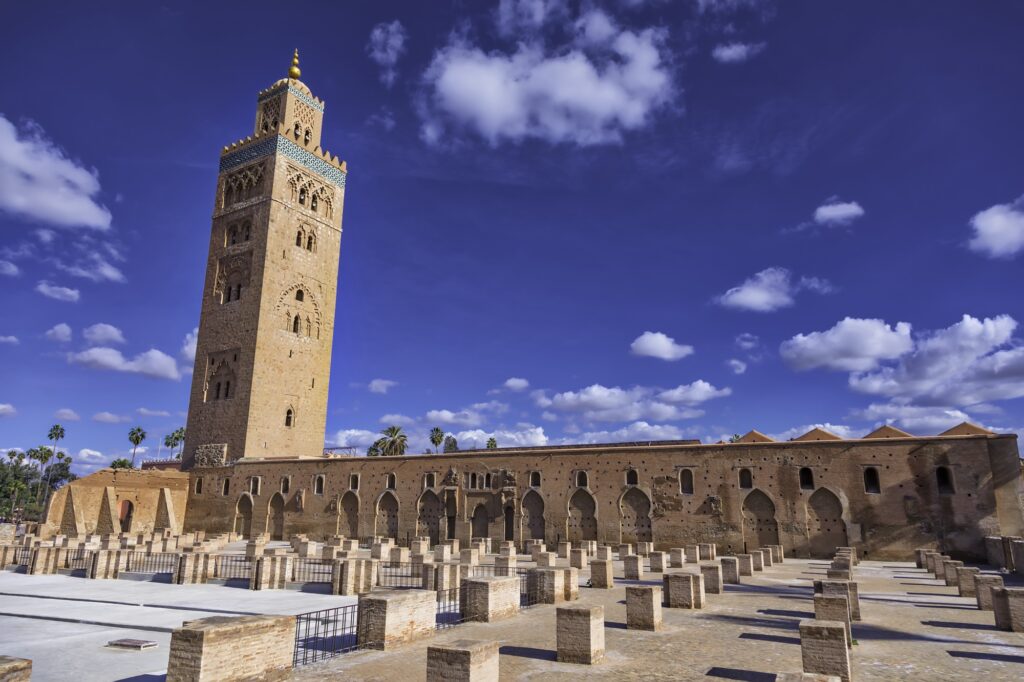
The Koutoubia Mosque, Marrakech’s largest place of worship, is a prominent landmark visible throughout the city.
Famed as the most iconic symbol of Marrakech, the mosque features a towering minaret that rises 250 feet (76 meters) high, dominating the city’s skyline. The muezzin’s call to prayer, heard five times a day, is a distinctive part of the city’s soundscape.
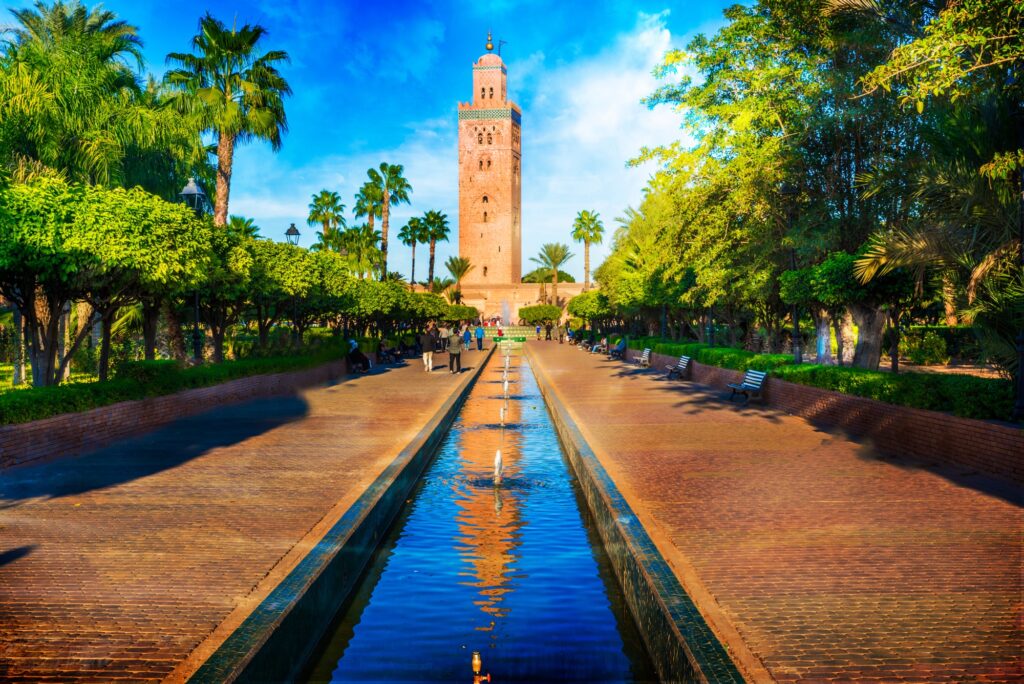
Although the mosque’s interior is reserved for Muslims, visitors of other faiths can admire the building’s exterior and its grounds, which beautifully exemplify Almohad architecture.
2. Jemaa el-Fnaa
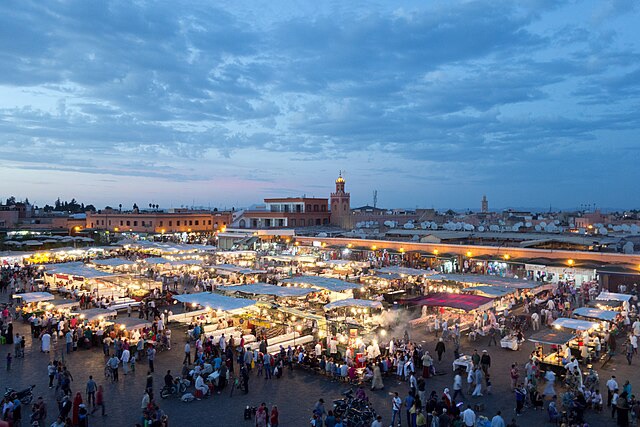
Jemaa el-Fnaa is the bustling center of Marrakesh’s Medina quarter, acting as a constant live performance space filled with activity at all hours. From the enticing aromas of street food to the captivating entertainers and musicians, the square offers endless entertainment, becoming particularly enchanting after dark.
Reputed to be the most vibrant marketplace in Africa, Jemaa el-Fnaa was recognized by UNESCO as a World Heritage site in 2001 due to its unique cultural significance. This recognition was so impactful that it led UNESCO to create a new heritage category focused on preserving the world’s oral and intangible cultural treasures.
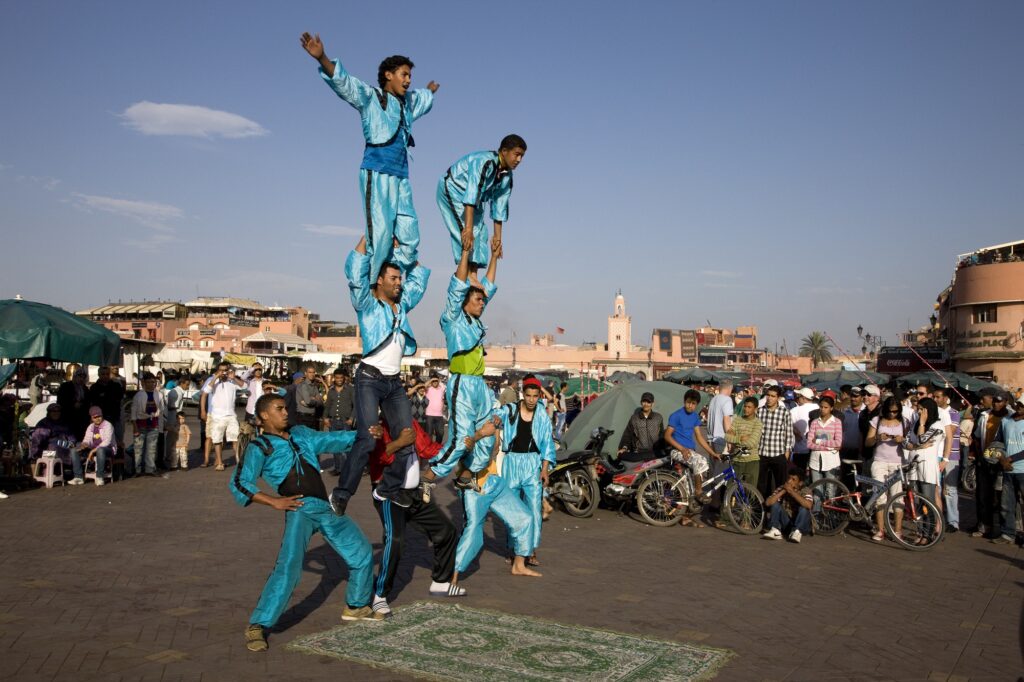
Experiencing Jemaa el-Fnaa is rewarding both during the day and after sunset. During daylight, the square is less crowded and the activity is more subdued, allowing you to fully appreciate its ambiance. As night falls, the square comes to life, bustling with vibrant performers and lively musicians, creating a magical atmosphere.
1. Exploring The Souks
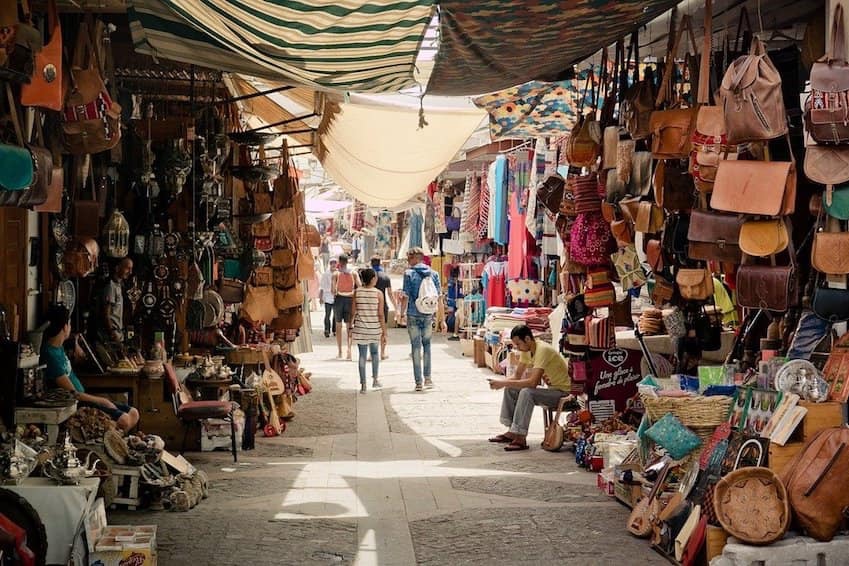
The Medina, the heart of Marrakesh’s historic Old Town, is the city’s premier tourist attraction. It is a labyrinth of narrow alleys lined with souks, traditional markets displaying a vast array of goods from fresh produce to handcrafted Berber carpets and ornate furniture.
Exploring the Medina is a sensory delight: soak in the rich aromas, marvel at the ancient architecture, hunt for unique souvenirs, and end your visit with a tea at a rooftop café, offering a panoramic view of the bustling activity below.
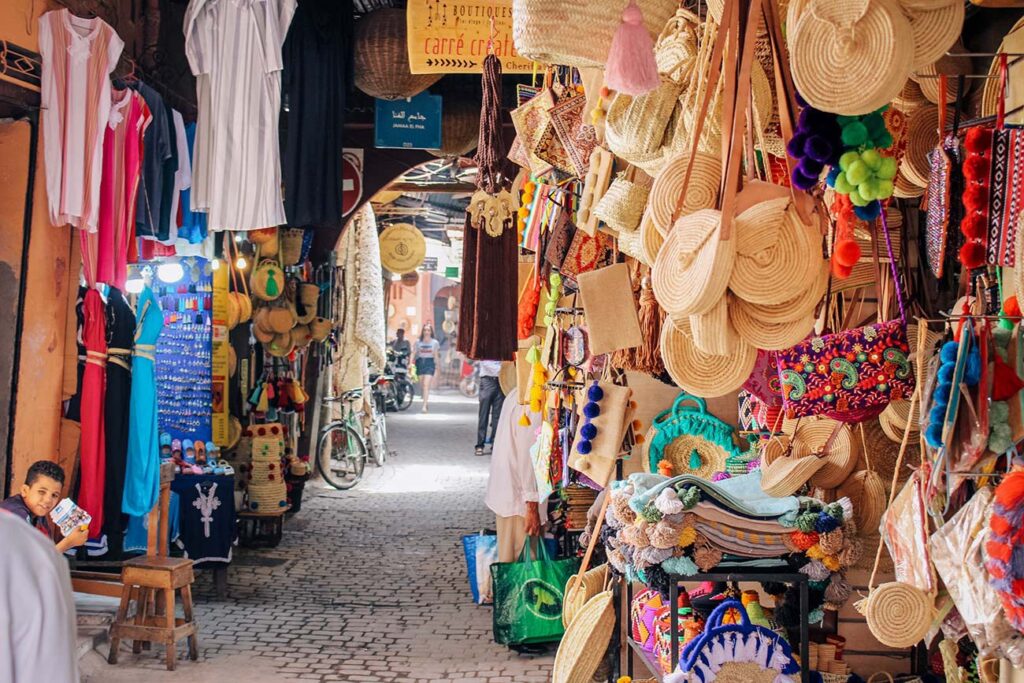
The souks are the lifeblood of the Medina, each organized by the type of goods they sell. Souk Semmarine is the vibrant hub, drawing the majority of visitors eager to immerse themselves in the essence of Marrakesh’s market culture.
Exploring further into Marrakesh, you’ll discover a peaceful retreat from the crowds. The extensive network of market lanes, featuring over 3,000 stalls, provides an exhilarating adventure. Embrace the chaos without worrying about getting lost; it’s all part of the city’s lively charm.
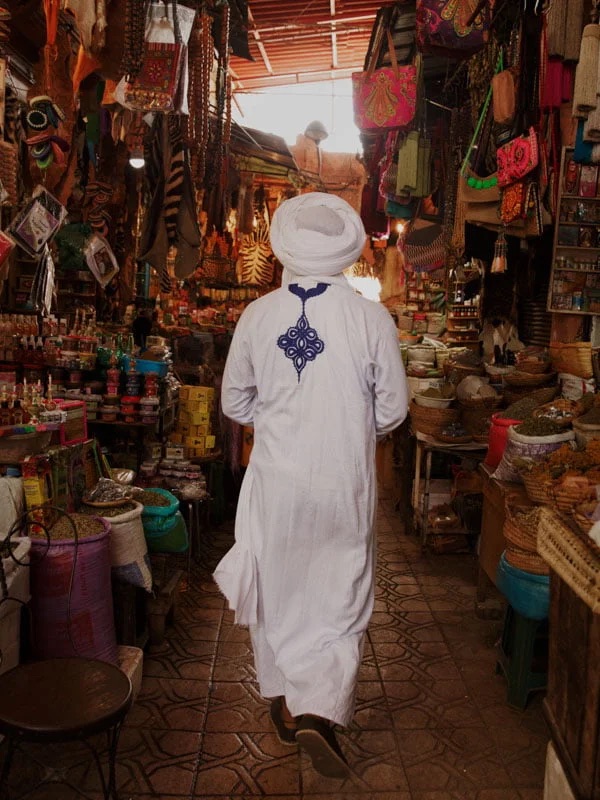
If navigating the vast souks seems overwhelming, consider booking a guided tour. This will help you maintain your bearings and ensure you see all the essential sights within the Medina.
